A Novel Discretization and Numerical Solver
for Non-Fourier Diffusion
ACM Transactions on Graphics (SIGGRAPH Asia proceedings)
Tao Xue*,1
Haozhe Su*,1
Chengguizi Han1
Chenfanfu Jiang2
Mridul Aanjaneya1
*Joint first authors
1Rutgers University
2University of Pennsylvania

[Paper]
[Code]
Abstract
We introduce the C-F diffusion model [Anderson and Tamma 2006; Xue et al. 2018] to computer graphics for diffusion-driven problems that has several attractive properties: (a) it fundamentally explains diffusion from the perspective of the non-equilibrium statistical mechanical Boltzmann Transport Equation, (b) it allows for a finite propagation speed for diffusion, in contrast to the widely employed Fick's/Fourier's law, and (c) it can capture some of the most characteristic visual aspects of diffusion-driven physics, such as hydrogel swelling, limited diffusive domain for smoke flow, snowflake and dendrite formation, that span from Fourier-type to non-Fourier-type diffusive phenomena. We propose a unified convection-diffusion formulation using this model that treats both the diffusive quantity and its associated flux as the primary unknowns, and that recovers the traditional Fourier-type diffusion as a limiting case. We design a novel semi-implicit discretization for this formulation on staggered MAC grids and a geometric Multigrid-preconditioned Conjugate Gradients solver for efficient numerical solution. To highlight the efficacy of our method, we demonstrate end-to-end examples of elastic porous media simulated with the Material Point Method (MPM), and diffusion-driven Eulerian incompressible fluids.
Gallery
Poroelastic material dynamics of a hydrogel driven by fluid absorption, simulated using our proposed method in combination with MPM (
grid resolution). The hydrogel exhibits rich anisotropic deformations with the generalized C-F diffusion model, which qualitatively match real-world observations.
Simulation of ink diffusing in water using our generalized diffusion solver with
and τ = 4 (
grid). Interestingly, the C-F diffusion model (right) produces a more vivid behavior, in contrast incompressible flow with no diffusion (left) and Fourier's diffusion (middle) produces an overly diffuse profile.
Simulation of diffusion in a medium with horizontal background flow with uniform velocity. (Left) The traditional Fourier-type diffusion solver produces an overly diffuse profile, since diffusion propagates both upstream and downstream. (Middle and Right) Our generalized diffusion solver produces realistic spray patterns with a limited "conical" diffusive region, as predicted by our diffusion taxonomy for different values of HC in the super-critical diffusive regime.

A coral reef simulated using our generalized phase-field modeling approach. A bump map has been used on the right to mimic a life-like reef structure. The fishes are kinematically scripted to give the appearance of an underwater scenery.
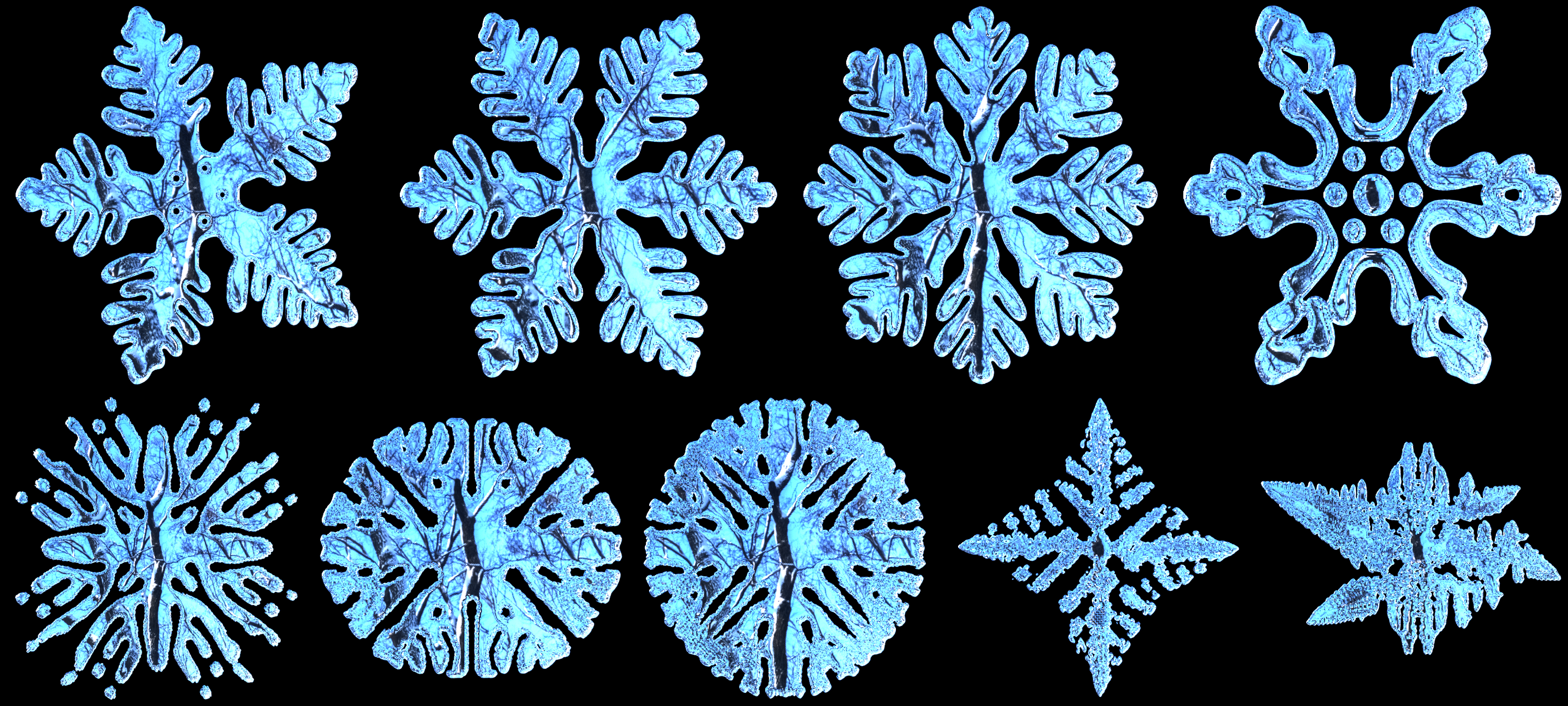
Our generalized diffusion solver generates snowflake patterns that can be described by a traditional Fourier-type diffusion solver (top row), but can also capture patterns that cannot be described by the traditional Fourier modeling approach (bottom row), as in this case the governing equations become purely hyperbolic (corresponding to the case
) (
grid). However, some of these patterns are indeed observed in the real world.
Acknowledgements:
The website template is borrowed from SVDiff project website.




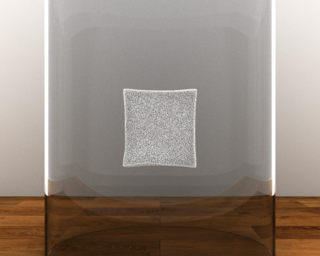


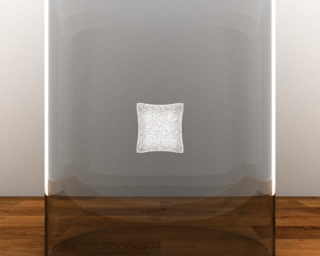
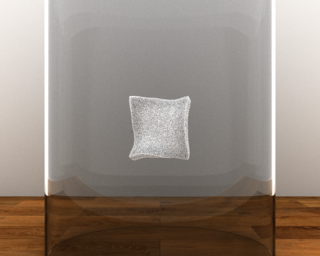



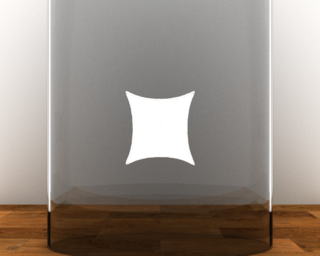




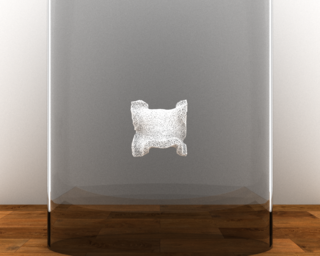
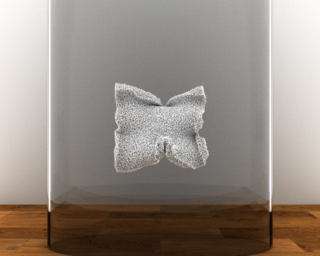

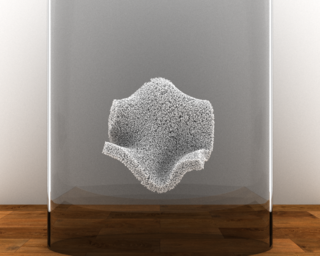
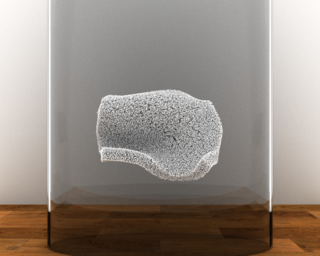
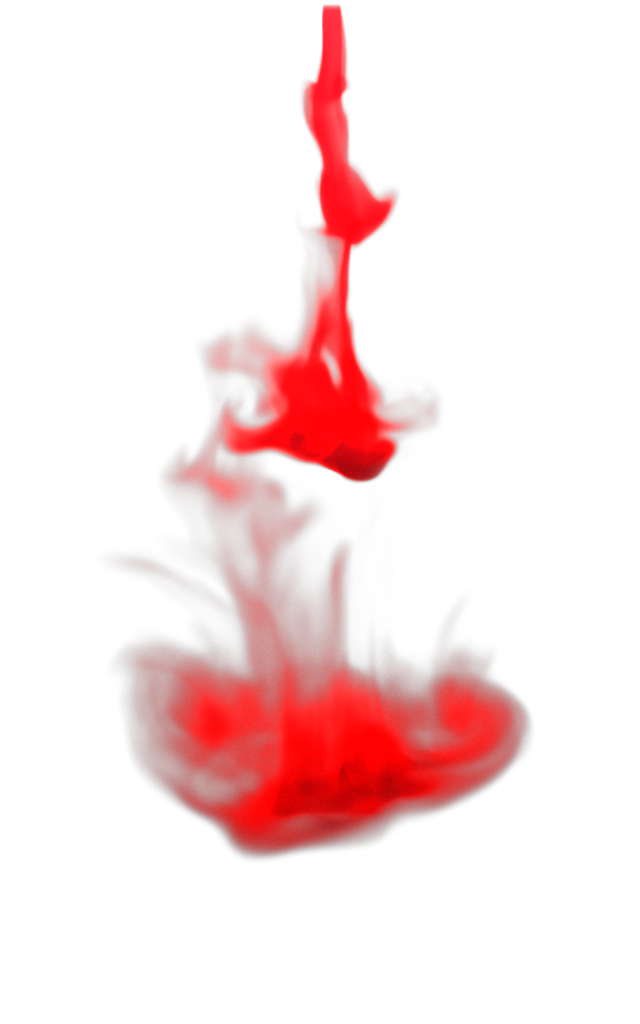
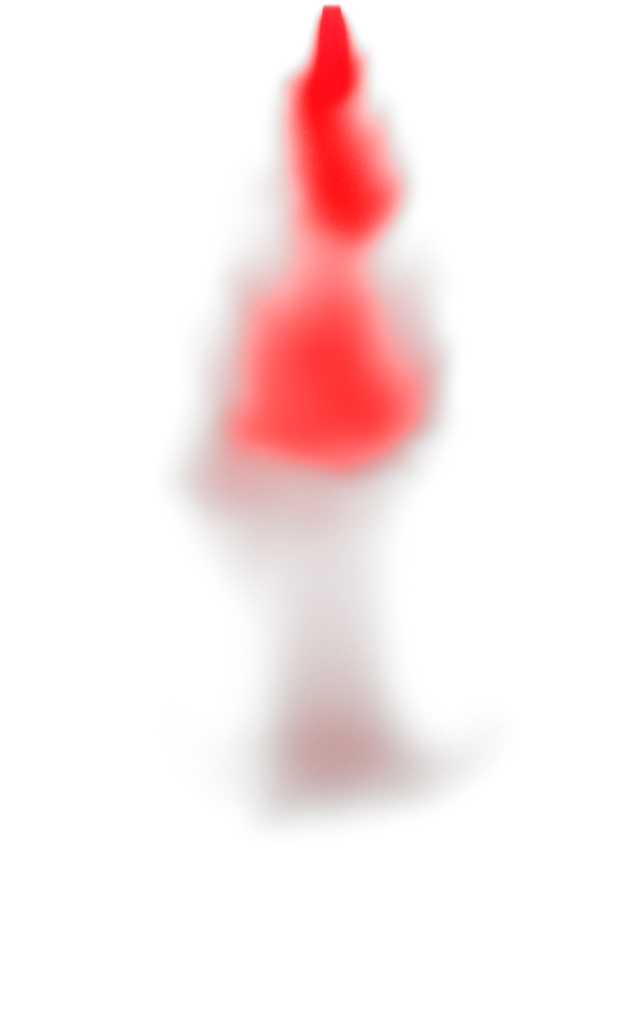

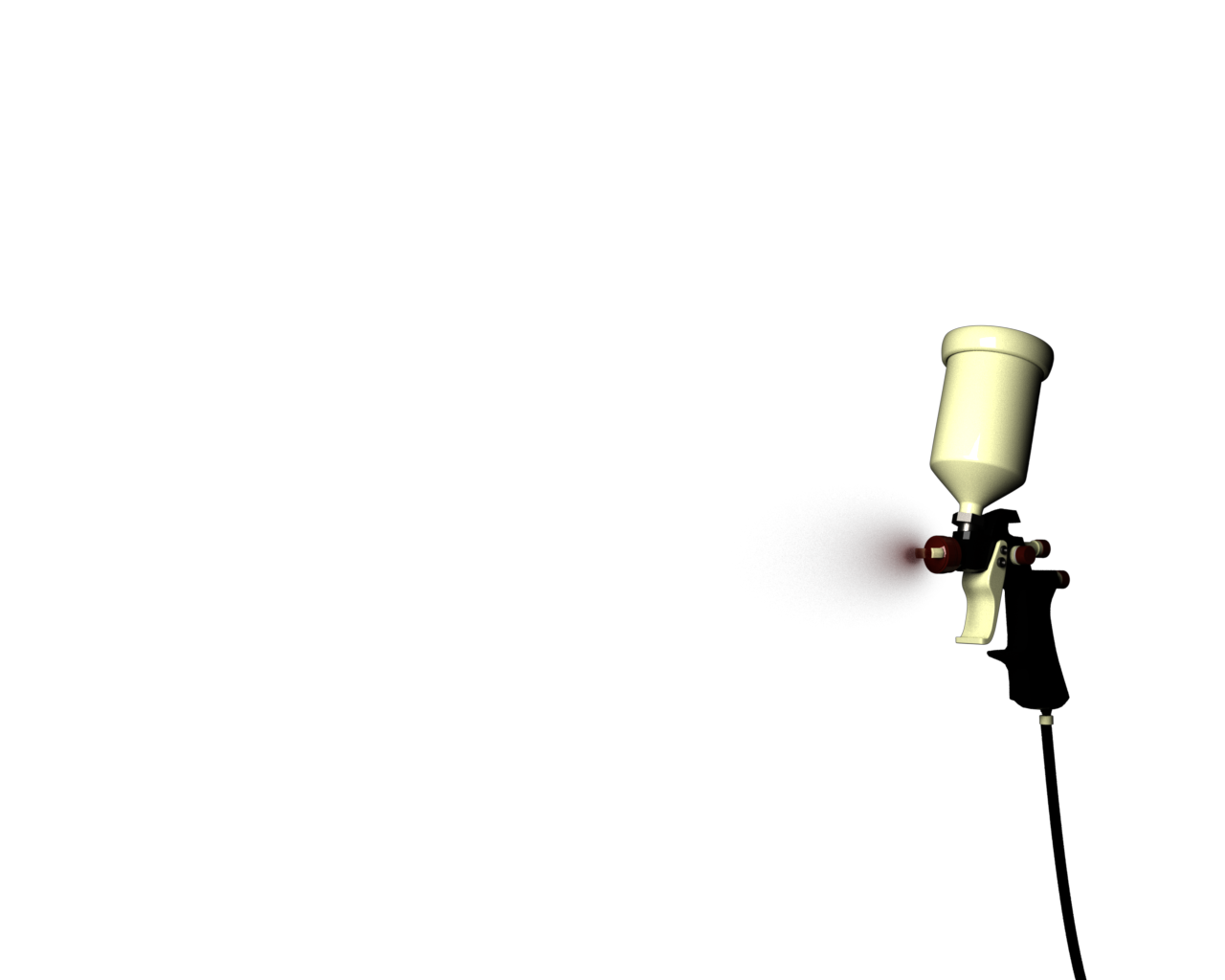


 A coral reef simulated using our generalized phase-field modeling approach. A bump map has been used on the right to mimic a life-like reef structure. The fishes are kinematically scripted to give the appearance of an underwater scenery.
A coral reef simulated using our generalized phase-field modeling approach. A bump map has been used on the right to mimic a life-like reef structure. The fishes are kinematically scripted to give the appearance of an underwater scenery.
 Our generalized diffusion solver generates snowflake patterns that can be described by a traditional Fourier-type diffusion solver (top row), but can also capture patterns that cannot be described by the traditional Fourier modeling approach (bottom row), as in this case the governing equations become purely hyperbolic (corresponding to the case ) ( grid). However, some of these patterns are indeed observed in the real world.
Our generalized diffusion solver generates snowflake patterns that can be described by a traditional Fourier-type diffusion solver (top row), but can also capture patterns that cannot be described by the traditional Fourier modeling approach (bottom row), as in this case the governing equations become purely hyperbolic (corresponding to the case ) ( grid). However, some of these patterns are indeed observed in the real world.